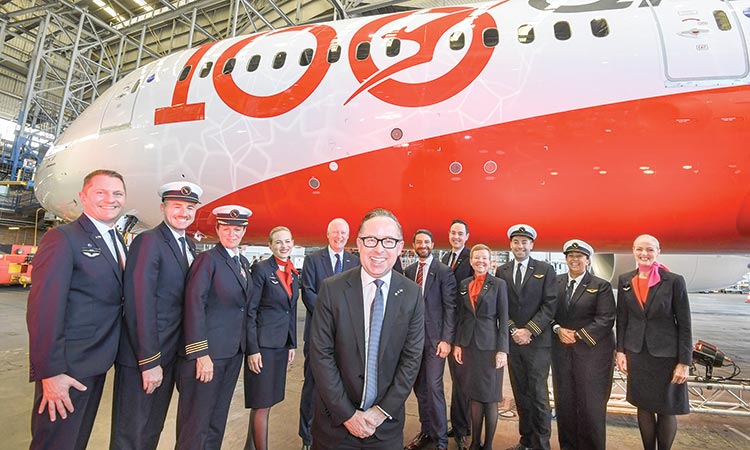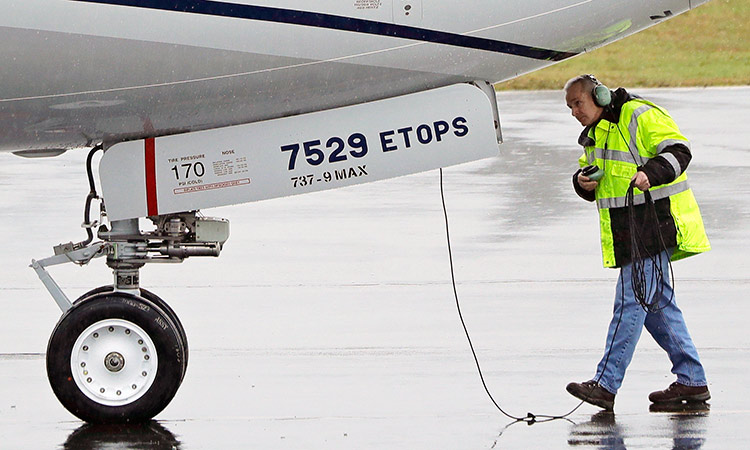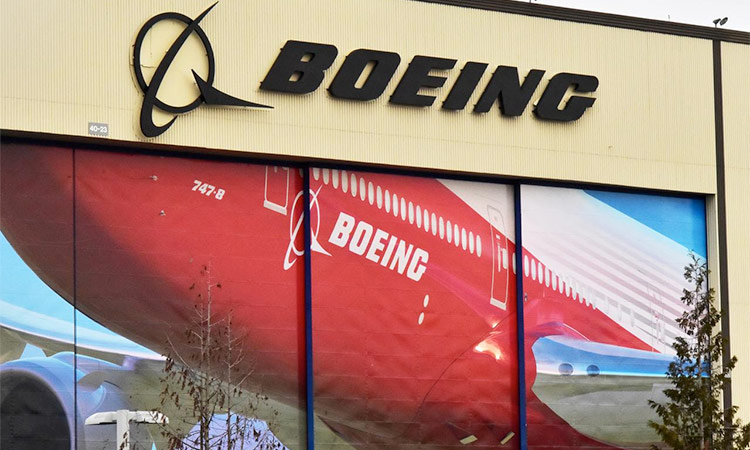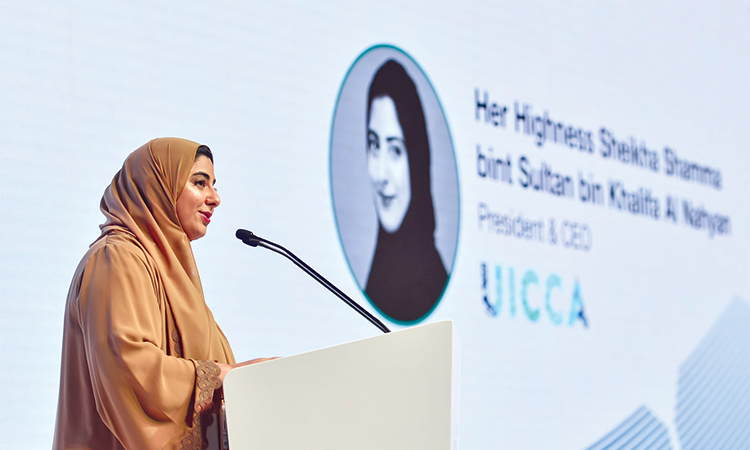Boeing seeking to reduce scope, duration of some physical tests
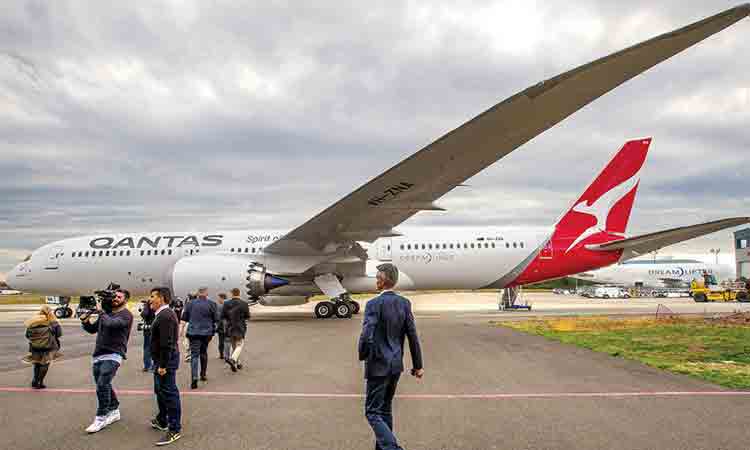
Qantas airlines’ first 787-9 Dreamliner is delivered by Boeing at the Future of Flight Aviation Centre in Everett. File/Reuters
But the strategy could be at risk if regulators and US lawmakers probing two deadly Boeing plane crashes require even more rigorous safety tests before certifying new aircraft as passenger-worthy.
As Boeing kicks off the year-long flight testing process on its new 777X, its engineers will cut hours off airborne testing by using computer models to simulate flight conditions, and then present the results to the US Federal Aviation Administration (FAA) as part of the basis for certification, according to two people with direct knowledge of the strategy.
Reuters could not determine when Boeing decided to move forward with the plan to cut back on physical tests or the extent to which it planned to reduce them for the 777X.
For Boeing’s proposed twin-aisle jetliner, known internally as NMA, Boeing’s Test & Evaluation group is developing the technology to replace costly and labor intensive physical safety tests used for decades - such as using machines to bend the wings to extreme angles and shaking the fuselage until it cracks - with computer modeling, according to three people with knowledge of the matter, including an FAA official.
Such work for the NMA is in the conceptual phase, though Boeing’s goal is to expand “certification by analysis” as “extensively as they possibly can” to slash development costs, one of the people told Reuters. Doing so enhances a finely balanced business case for launching NMA, which would be the first aircraft fully developed in the digital age.
Boeing spokesman Paul Bergman declined to comment on the company’s testing strategy for the 777X or the NMA, but said the planemaker was “looking holistically at our design and certification processes” following the 737 MAX crashes in Ethiopia and Indonesia, which together killed 346 people.
“This includes participating in ongoing independent government reviews and establishing a new board committee to review our end-to-end design and certification processes,” Bergman said.
When asked whether the FAA would allow Boeing to eliminate an array of physical tests for NMA and 777X, FAA spokesman Lynn Lunsford said the agency “makes determinations on a case-by-case basis, relying on data and decades of experience in certifying aircraft.” Current regulations allow planemakers to use physical testing and analysis to demonstrate compliance.
Like the MAX, the NMA and 777X - which Boeing is racing to deliver in 2020 - are centerpieces in Boeing’s duel with Airbus SE and will influence how Boeing decides to manufacture and certify an eventual 737 MAX replacement. How quickly and at what cost the new planes are delivered to customers is critical to not just Boeing’s bottom line, but also the U.S. Congressional budget.
In February 2018, Boeing CEO Dennis Muilenburg touted the company’s “streamlining certifications” effort at an industry conference, saying it was “an item we want to keep on the leading edge.” While Boeing declined to elaborate on what Muilenburg meant by “streamlining,” people familiar with the matter said it includes lobbying for more limited direct FAA oversight and expanding the use of digital analysis over costlier physical testing to show regulatory compliance.
Like Boeing, Airbus and other manufacturing heavyweights are working to seize technological leaps in computerized engineering methods and tools that bridge the real and virtual world, and improve factory floor efficiency. Airbus declined to comment.
Five people familiar with the matter said Boeing believes that new technology and decades of testing experience have rendered some physical tests redundant for demonstrating safety.
For example, when vibrating a fuselage on an enormous platform to expose weaknesses - known as fatigue testing - the vast majority of the time the tool itself breaks instead of the airframe, according to a person with knowledge of past tests. Such work is costly and has reliably confirmed engineers’ expectations, he added.
The strategy to streamline plane certifications faces hurdles in the coming months as the FAA and other global regulators investigate whether Boeing’s processes are flawed after the MAX crashes, and as the Chicago-based planemaker seeks to reassure the flying public that its jetliners are safe.
Reuters
